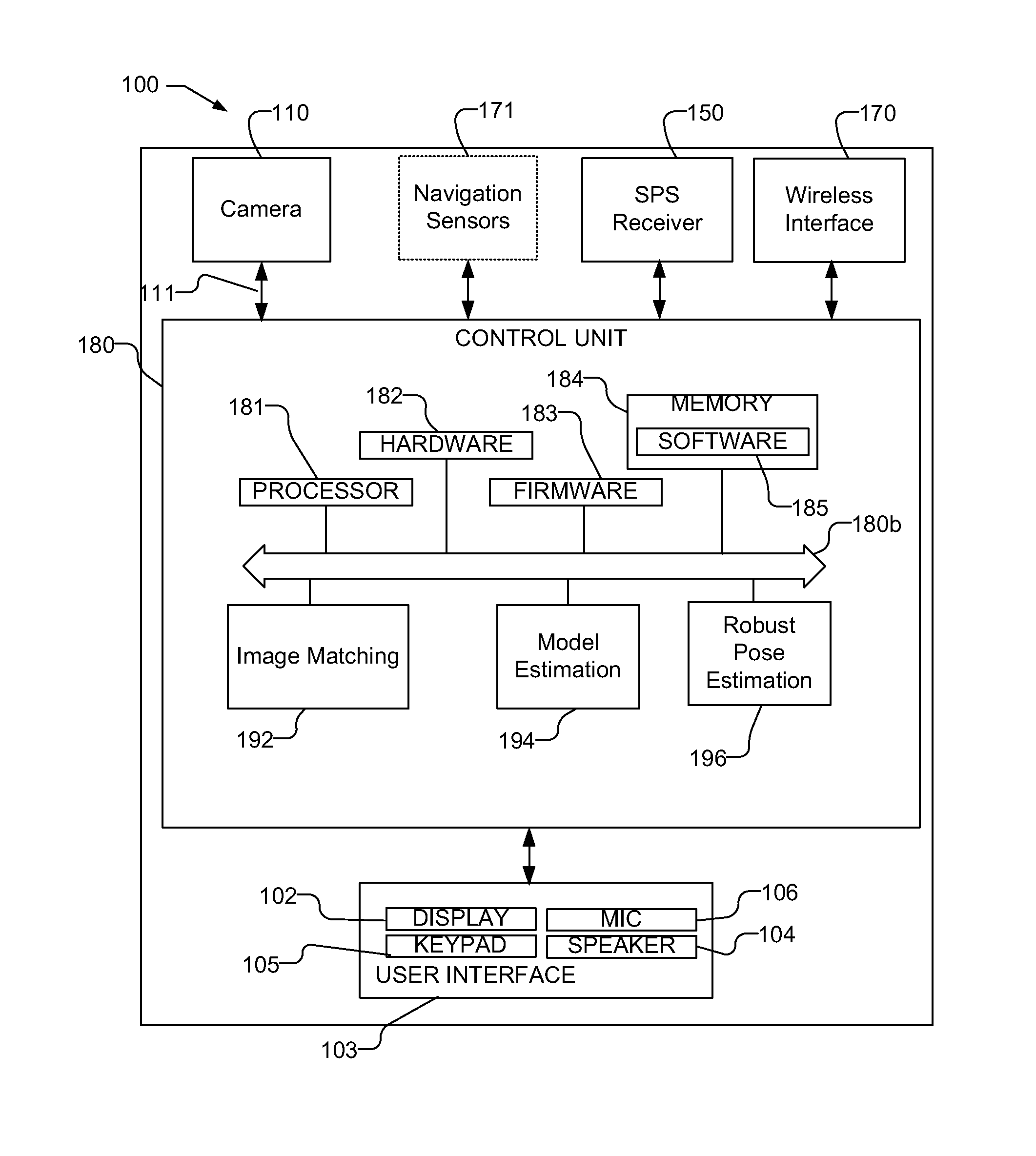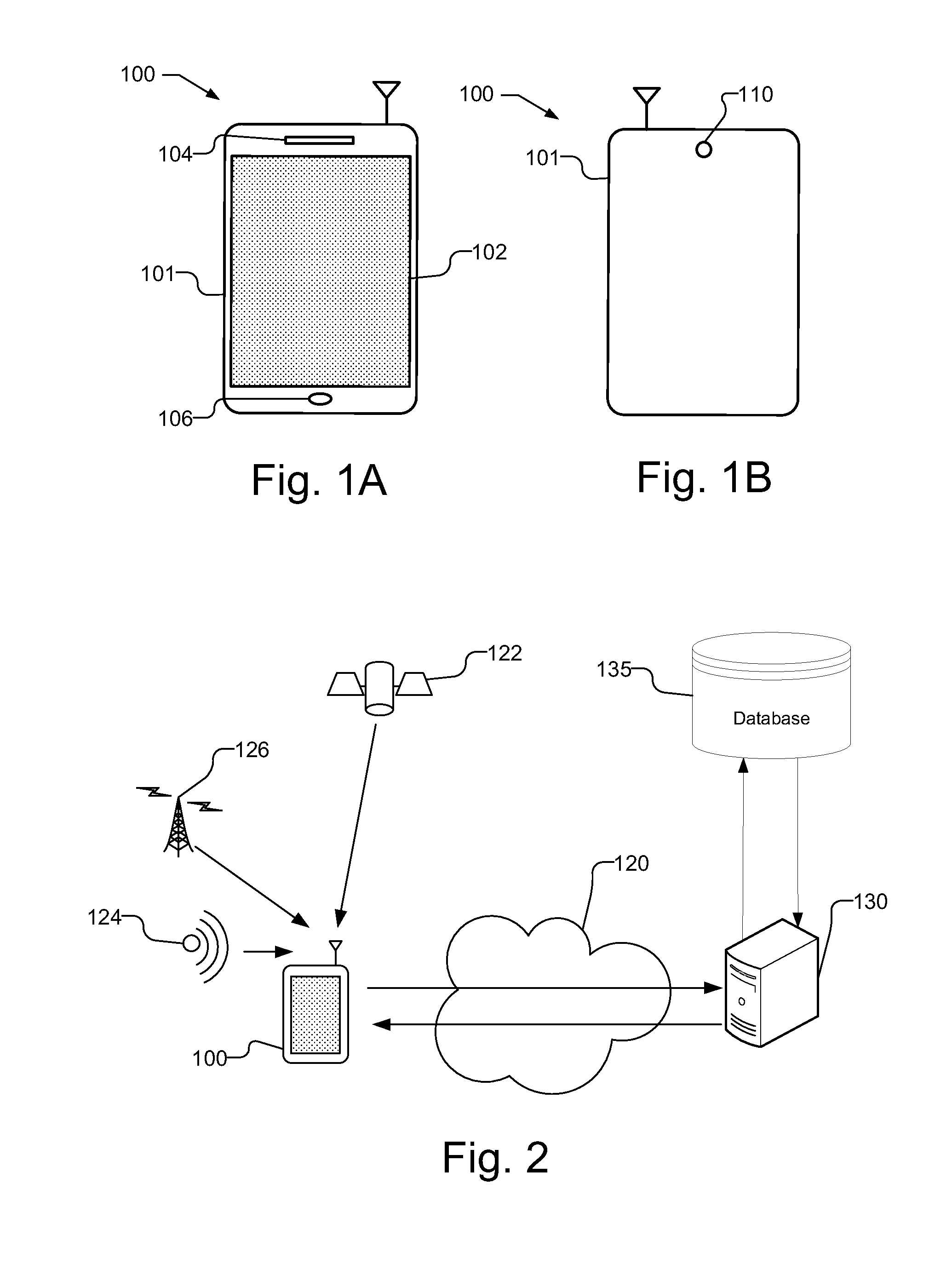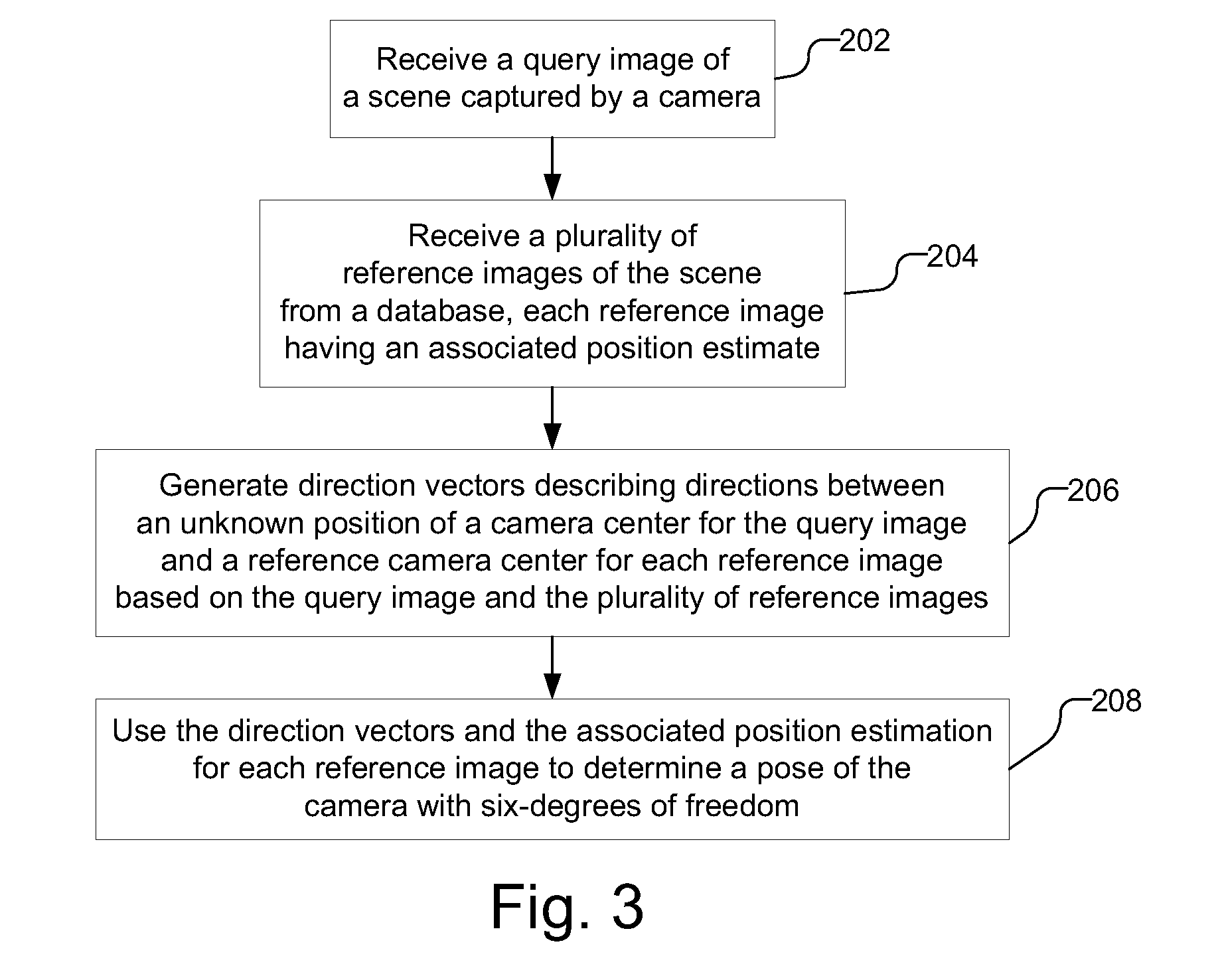Scene structure-based self-pose estimation
a self-pose estimation and scene technology, applied in the field of positioning and tracking, can solve the problems of unsolved problems such as the scalability and maintainability of the required 3d models, and the building of these models is usually a complex offline process
- Summary
- Abstract
- Description
- Claims
- Application Information
AI Technical Summary
Benefits of technology
Problems solved by technology
Method used
Image
Examples
Embodiment Construction
[0018]FIGS. 1A and 1B below illustrate a front side and back side, respectively, of a mobile device 100 capable of using scene structure based pose estimation to determine a 6 DOF pose without the need for 3D reconstruction. As described herein, pose estimation is performed using a scene structure captured in a query image and reference images from a database. Each of the reference images has an associated position estimate. For example, for the pairs formed by the query image and each of these reference images, the epipolar geometry is estimated using image features, e.g., such as SIFT (Scale-Invariant-Feature-Transform). From known epipolar geometry, the epipole may be obtained and, together with the known position of the reference image, may be treated as a single 2D-3D correspondence for the query image. Based on at least three reference images, the standard three-point pose problem may be used. The full 6 DOF pose of the query camera may be estimated in a global context, e.g., ...
PUM
 Login to View More
Login to View More Abstract
Description
Claims
Application Information
 Login to View More
Login to View More - R&D
- Intellectual Property
- Life Sciences
- Materials
- Tech Scout
- Unparalleled Data Quality
- Higher Quality Content
- 60% Fewer Hallucinations
Browse by: Latest US Patents, China's latest patents, Technical Efficacy Thesaurus, Application Domain, Technology Topic, Popular Technical Reports.
© 2025 PatSnap. All rights reserved.Legal|Privacy policy|Modern Slavery Act Transparency Statement|Sitemap|About US| Contact US: help@patsnap.com



